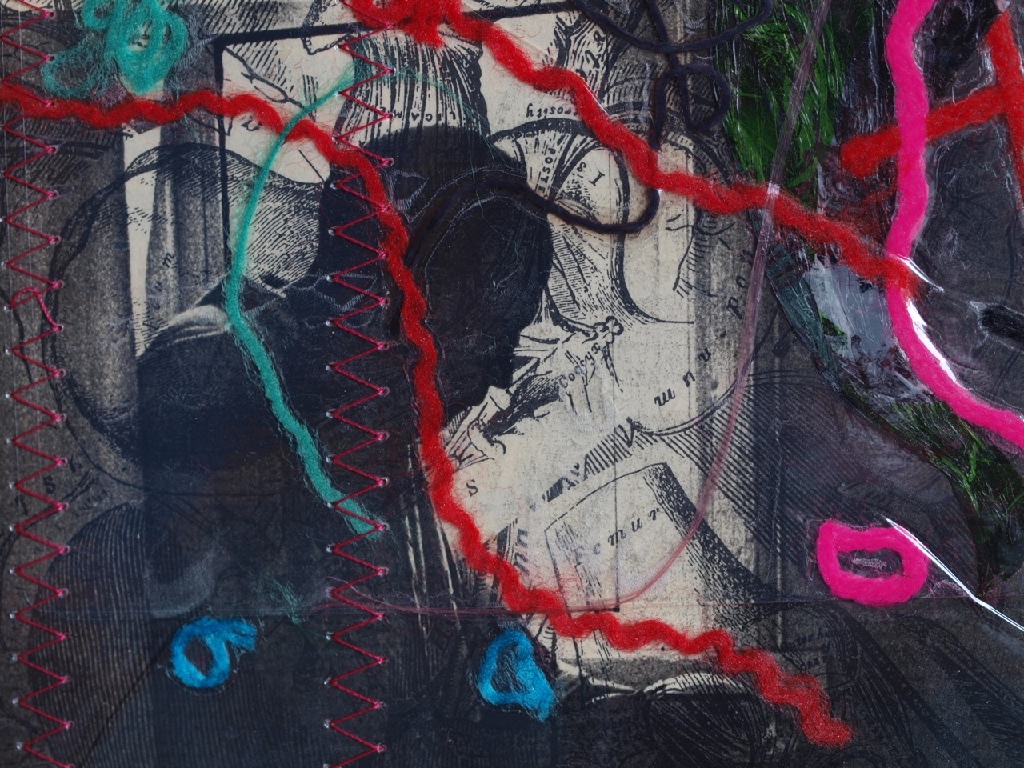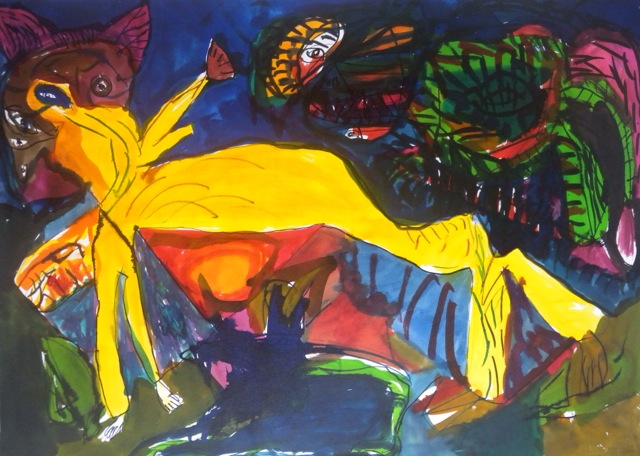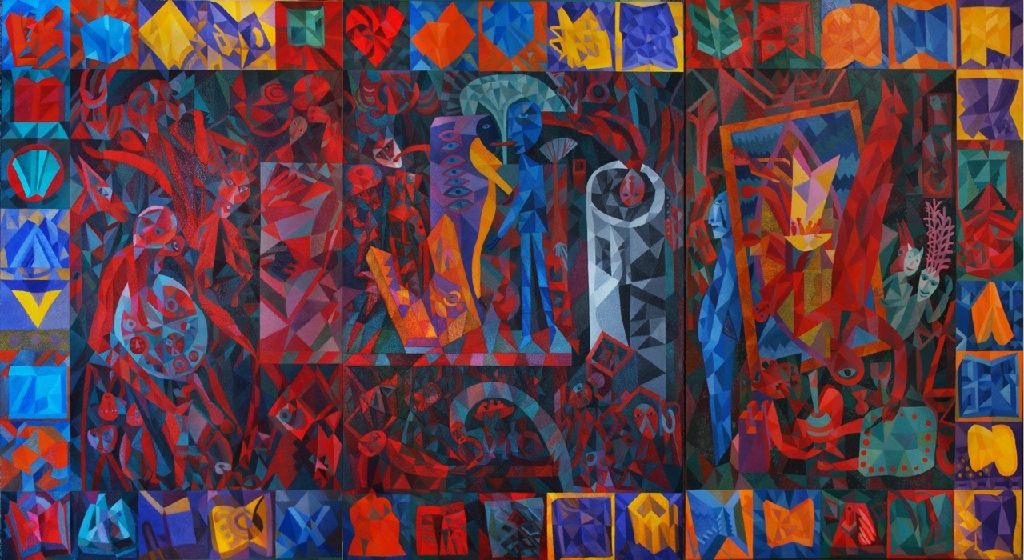Dave Pearson is one of those rare artists whose work does not only communicate the intensity of his vision, but can transform for the viewer the way in which the world is seen and experienced.
……Call yourself alive? I promise you
you’ll be deafened by dust falling on the furniture,
you’ll feel your eyebrows turning to two gashes,
and every memory you have – will begin at Genesis.
Extract from ‘Temptation’, by Nina Cassian, selected by Dave for his memorial a few days before his death.

His work takes us to strange places with impossible, thick, tangible space, peopled by hoards of undefined humans and animals, yet they are also oddly familiar: disorientating, compelling and beautiful, joyously exuberant, and darkly obsessive in equal measure.
Dave was an exceptionally imaginative and prolific artist who, throughout a career spanning more than 50 years, created at least 14,000 pieces of work in every medium on which he could lay his hands. The work ranges in scale from the tiny and intimate to installations of paintings for which the nearest parallel would be a mediaeval Byzantine church, in which every inch of the walls (sometimes the ceiling too) would be covered with minutely detailed paintings with jewel-like colours, embroidery-like texture and enigmatic images. The experience for the viewer is one of immersion rather than separation or objectivity.
Almost uniquely, because he chose to spend every available minute producing ever more work rather than following up opportunities to promote it, he has left an almost complete body of work, much of it never seen. Dave never went back to complete pieces; he felt that once the separation was made the work had its own autonomy. Similarly, since it then had a life of its own, and although he hoped passionately that it would be seen, he felt its future was not in his hands.
As may be imagined, this has caused some headaches for his friends and family after his death, and for the Trust that has formed to preserve and promote the work. However, it is also a rare and precious opportunity to discover a vast and diverse body of work of exceptional quality, produced by an extraordinary man.

Subject matter
Dave’s subject matter throughout his life came from both personal, internal preoccupations, and from daily life around him. He drew inspiration from literature (in particular, Dante’s Inferno, Homer’s Odyssey, the Book of Revelation, James Joyce’s Ulysses, Under Milk Wood by Dylan Thomas, the poems of WB Yeats and many more) and from the colours and kitsch designs of packaging of cheap goods, from random objects from house clearances and plastic toys imbued variously with sentimentality or violence.
Throughout his life he was moved by the subject of war, both by passionate anger against those who started it, and by the heroism and humanity of individuals caught up in it; his photographic documentation of war memorials spanned his adult life. He had a strong, political sense of history and many pieces of work were responses to historical events. As an example, he made a massive (21 feet wide) painting to commemorate the fiftieth anniversary of the Jarrow March. He was also inspired by films (for instance Vincent Minnelli’s Lust For Life, and Luis Bunuel’s Milky Way), by accounts of the rituals and customs in the lives of ordinary people, by mythology, and by personal, emotional experiences and autobiographical subject matter.

Artistic influences
Early influences included Abstract Expressionism, Pop Art, and Rauschenberg who linked both movements. He was also drawn Schwitters’ Merzbau, to Leger’s use of form, space and colour; like him, he wanted to ‘…paint in slang with all its color and mobility’. He loved so-called ‘primitive’ art, for example the tribal art of Africa, Oceanic art and that created around the Day of the Dead in Mexico. He admired ‘Outsider Art’, both for the freshness and directness of the work produced, and also for its integrity, its motivation arising out of an internal necessity rather than a self-conscious need to be guided by fashion, reputation or financial gain. Dave also loved Picasso, Matisse, and many, many others.
Throughout his life he was fascinated by developments in contemporary art and retained an open mind, being interested and inspired by work that ostensibly had few links with his own, such as that of Bruce Nauman. Dave was by nature respectful of other artists, whether well-known or minor figures, or students starting out, and his open-mindedness to very different kinds of artwork was characteristic of his imagination and creativity.
COPYRIGHT: Margaret Mytton 2009
